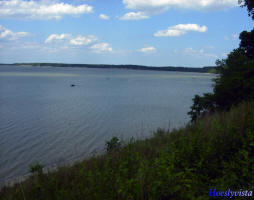- Regional water observation mechanism
- Regional Cooperation Assessment
- Water Quality Monitoring (JP)
- Water scarcity and drought (JP)
- Groundwater (JP)
- Waste water reuse (JP)
- Shared Water Resources Management (JP)
- Linking rural development and water management (JP)
- Waste management
- Water institutions
- Climate Change
- Floods
- Desalination
- Right to Water
- Irrigation
- Satellite data
- Water reports & data
- Hydrology
- Sanitation
- Gender and IWRM
- ArabWAYS
- Non-Revenue Water
- Virtual Water & Water Footprint
- WANA Water Panel
- Water Demand
- Water Governance
- Water Pricing
- Water accounts
- Water nexus Energy
- Geosciences
- Rural Management
 Integrated Groundwater Management Concepts, Approaches and Challenges
Integrated Groundwater Management Concepts, Approaches and Challenges
Managing water is a grand challenge problem and has become one of humanity’s foremost priorities. Surface water resources are typically societally managed and relatively well understood; groundwater resources, however, are often hidden and more difficult to conceptualize. Replenishment rates of groundwater cannot match past and current rates of depletion in many parts of the world. In addition, declining quality of the remaining groundwater commonly cannot support all agricultural, industrial and urban demands and ecosystem functioning, especially in the developed world. In the developing world, it can fail to even meet essential human needs. The issue is: how do we manage this crucial resource in an acceptable way, one that considers the sustainability of the resource for future generations and the socioeconomic and environmental impacts? In many cases this means restoring aquifers of concern to some sustainable equilibrium over a negotiated period of time, and seeking opportunities for better managing groundwater conjunctively with surface water and other resource uses. However, there are many, often-interrelated, dimensions to managing groundwater effectively. Effective groundwater management is underpinned by sound science (biophysical and social) that actively engages the wider community and relevant stakeholders in the decision making process. Generally, an integrated approach will mean “thinking beyond the aquifer”, a view which considers the wider context of surface water links, catchment management and cross-sectoral issues with economics, energy, climate, agriculture and the environment. The aim of the book is to document for the first time the dimensions and requirements of sound integrated groundwater management (IGM). The primary focus is on groundwater management within its system, but integrates linkages beyond the aquifer. The book provides an encompassing synthesis for researchers, practitioners and water resource managers on the concepts and tools required for defensible IGM, including how IGM can be applied to achieve more sustainable socioeconomic and environmental outcomes, and key challenges of IGM. The book is divided into five parts: integration overview and problem settings; governance; socioeconomics; biophysical aspects; and modelling and decision support. However, IGM is integrated by definition, thus these divisions should be considered a convenience for presenting the topics rather than hard and fast demarcations of the topic area.
| Creator | Anthony J. Jakeman, Olivier Barreteau, Randall J. Hunt, Jean-Daniel Rinaudo, Andrew Ross, Muhammad Arshad, and Serena Hamilton |
|---|---|
| Type of document | Book |
| Rights | Public |
| File link |
http://download.springer.com/static/pdf/350/bok%253A978-3-319-23576-9.pdf?originUrl=http%3A%2F%2Flink.springer.com%2Fbook%2F10.1007%2F978-3-319-23576-9&token2=exp=1474366697~acl=%2Fstatic%2Fpdf%2F350%2Fbok%25253A978-3-319-23576-9.pdf%3ForiginUrl%3Dhttp%253A%252F%252Flink.springer.com%252Fbook%252F10.1007%252F978-3-319-23576-9*~hmac=bee593abbee2ee0fcbc8db61cec60ec1163c271b8e0540905e2c8e349ec90ad2 |
| Source of information | springer |
| Subject(s) | no translation available , no translation available , no translation available , no translation available |
| Geographical coverage | n/a |
 you are not logged in
you are not logged in





